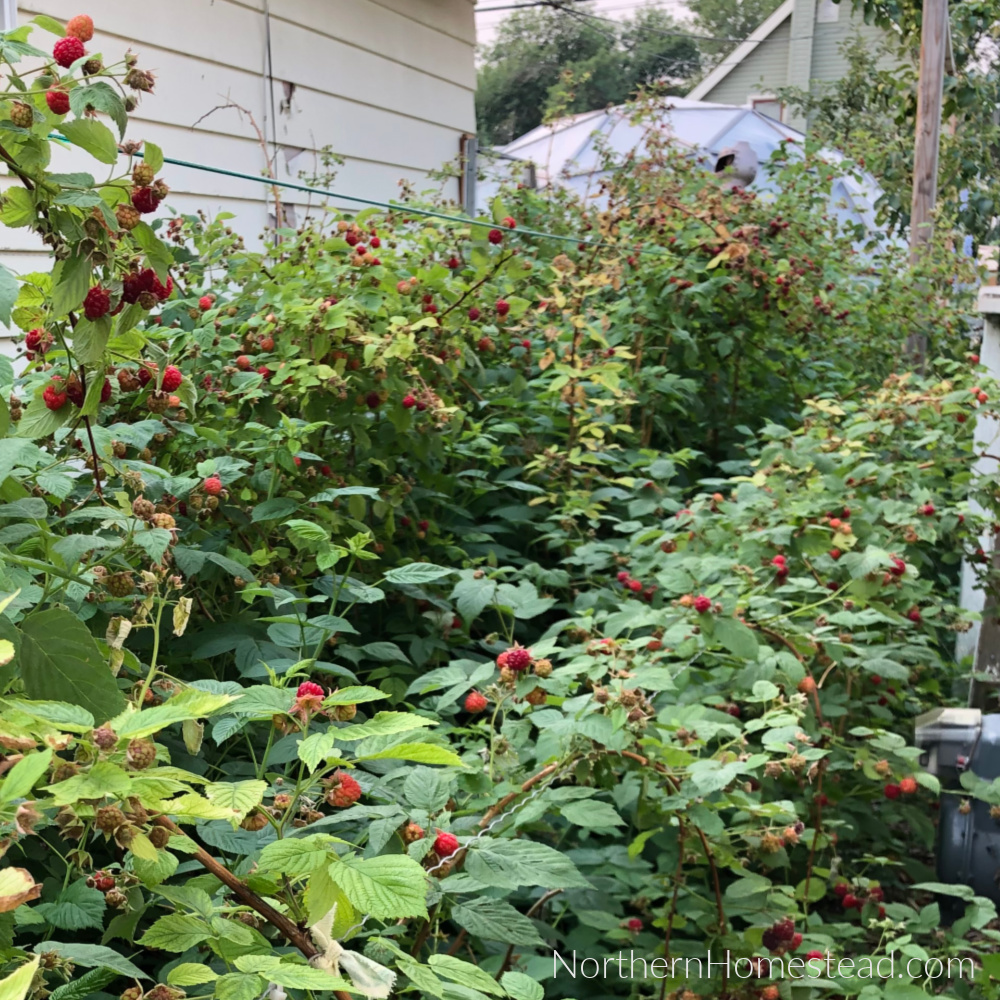
Raspberries are one of my favorite berries. Growing raspberries in a cold climate is not difficult because raspberries are quite hardy. Caring for the raspberry patch was one of the first tasks I learned in my childhood on my parents’ homestead. If you did not have the opportunity to learn hands-on, this blog post is for you—a Complete Guide to Growing Hardy Raspberries in Cold Climates.
Raspberry varieties

There are many varieties of raspberries to choose from, each different in colour, shape, taste, and growth habits. Growing raspberries in various colors is fun. The picture above shows Honey Queen Yellow Raspberry, regular red Raspberry, and Black Wyoming Raspberry.
There are two types of raspberries: Regular cane and primocane. Ensure you know which one you plant, as they have different pruning needs.
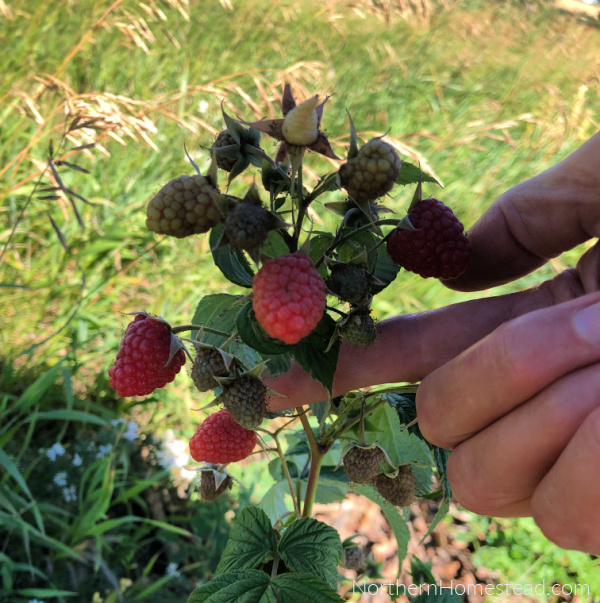
Buying new healthy canes is your best choice if you want a specific variety. Boyne is a long-time reliable favorite; Nova, Red River, and Royalty are also good choices, to name a few.
We do not know what variety of raspberries we grow in our main raspberry patch. They were already there when we bought the house. They also have multiplied freely, as raspberries do, and we have shared them with other gardeners as good raspberries with no name. That’s probably the most common situation all around. Raspberries are shared from one homestead to another. Raspberries that are shared locally will also grow well in the same area since they have already adapted to the local environment.
Some varieties produce in early summer and late fall. However, the fall harvest seldom makes it in our short growing season.
Where to plant raspberries
Raspberries are vigorous growers, and they spread mostly by underground lateral roots (runners or stolons), read sucker a lot. Planting them as a hedge at the end of the garden is not such a good idea. They will take the garden over if you let them. If possible, give them a dedicated area.
In nature, raspberries grow at the edge or opening of a forest. A bit sheltered by trees and in partial shade. That’s precisely the environment they like. Growing raspberries in the open field does not work well, especially in a cold climate.
The soil in a forest is rich in organic material and dominated by fungi. Mulching the soil with woodchips helps to keep weeds down and moisture in, and also builds the fungal soil life that berries like.
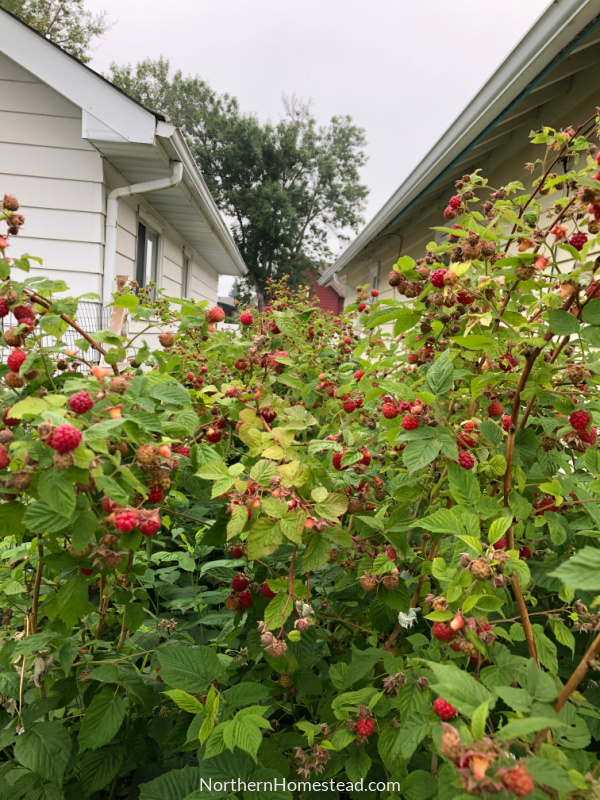
We grow our main patch between two houses. The houses provide shelter and partial shade, like a forest. However, the plants still get full mid-day sun, which they seem to like.
Choose a location that resembles their natural environment, and they will grow and produce for many years.
How to plant raspberries
Preparing the soil before planting is essential. If raspberries are planted in a food forest, you might not need much since that’s their natural environment. However, if you are planting raspberries in a garden or grass/lawn area, adding peat moss and organic material can help.
In our home garden, we covered the lawn with a thick layer of wood chips the year before planting the raspberries. The wood chips killed the grass and made the soil ready for berries.
Raspberries are best planted in early spring when they are still dormant. If digging them up from someone else, prune the canes back to about 1 foot so the roots do not have to support as much growth.
Plant in rows or clusters about 2 feet apart, ensuring you can harvest them easily. For example, plant three rows if you can reach in and pick from both sides, extending your reach to 2 feet. If they are planted against a fence or wall, make two rows at most, so you can reach in to pick the berries. Planting in a single row with pathways in between makes harvesting easier. Select the option that works best for your location.
Keep the roots moist at planting time, and water well after planting. Raspberries do not like dry feet; remember the forest environment where the soil is usually damp.
Pruning raspberry canes
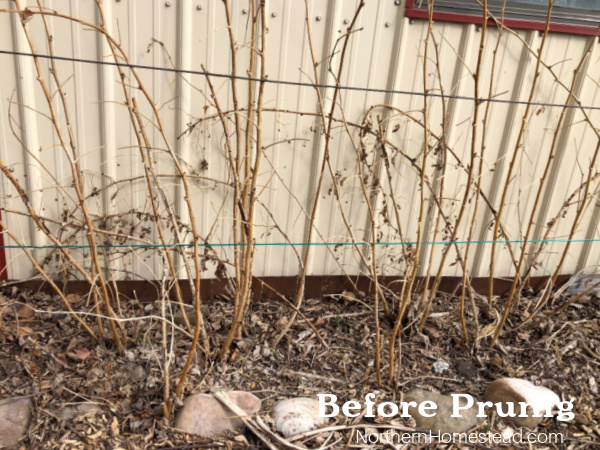
All raspberry plants need pruning. This is because once a raspberry cane produces its main crop, it dies back. Primocanes bear fruit in their first year of growth, while regular canes produce the main fruit in their second year, although some may yield a small crop in the fall of their first year. Regardless of the type, removing dead canes in the spring is essential. The specific pruning method depends on the type of raspberry plants you have, but they all require pruning to keep the raspberry patch productive and accessible.
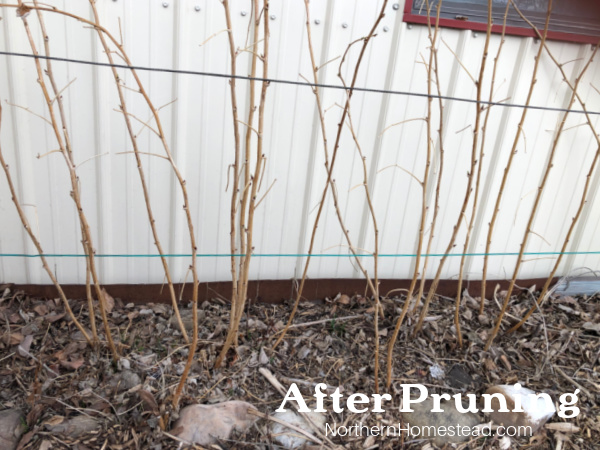
To prune the raspberries, you will need a good hand pruner. We would recommend the Felco F-2 Classic Manual Hand Pruner.
Pruning Regular cane raspberries
Regular cane raspberries are the most common, traditional varieties. They produce berries on last year’s growth. The berries can be red, purple, or yellow in color. In our cold climate, we prune regular cane raspberries in early spring, before the plants have developed leaves. Provide the old canes with additional support over the winter to protect them against heavy winds or snowfall.
When it is time to prune, remove all old canes. It is easy to see which are alive and which are dead. The old canes are usually lighter in color and would break if bent. They also have side shots, another easy indicator.
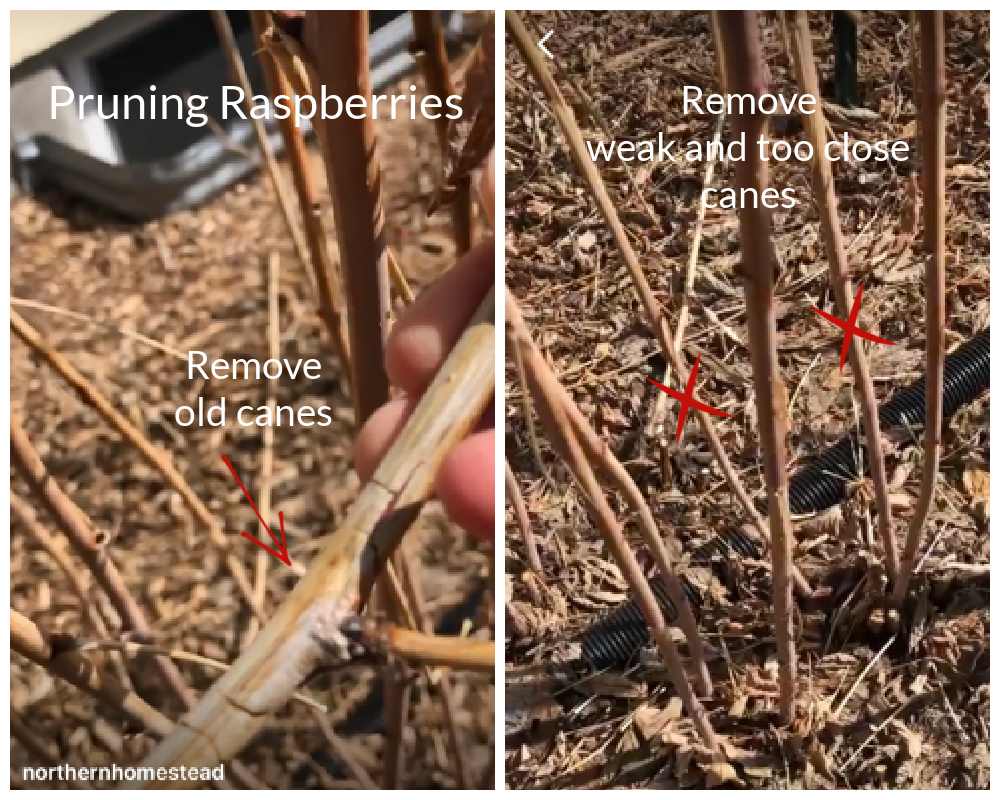
Once the old canes are cut close to the ground, you can better assess the new growth. Remove all weak canes, as they are often suckers that attempt to grow new plants, eventually overgrowing the raspberry patch. Only leave sturdy and healthy canes. For very established plants, you can leave up to four canes per plant. Additionally, remove canes that are too close together. Aim for 9-10 canes per meter (or about 3 feet) in a row of raspberries.
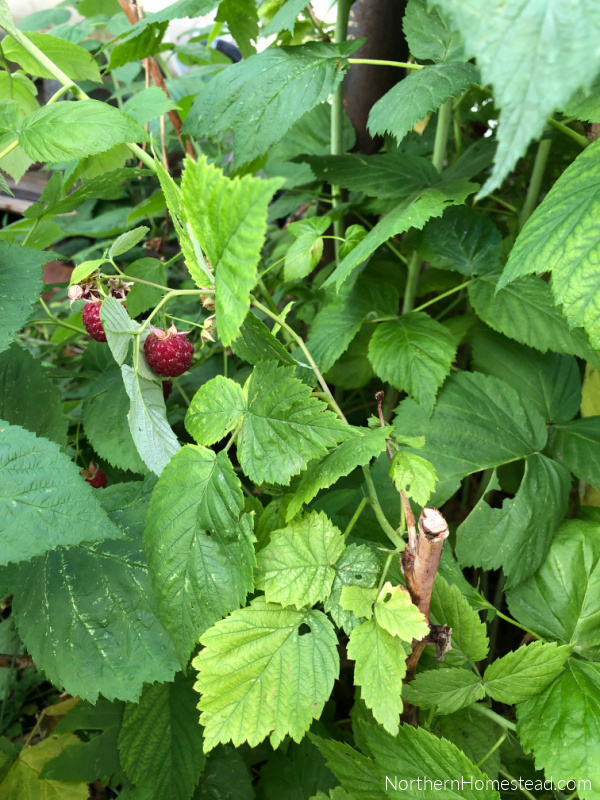
My parents taught me always to trim the tops of the regular canes. This seems to result in larger berries, but it may reduce the overall harvest. Try both methods to see which one you prefer.
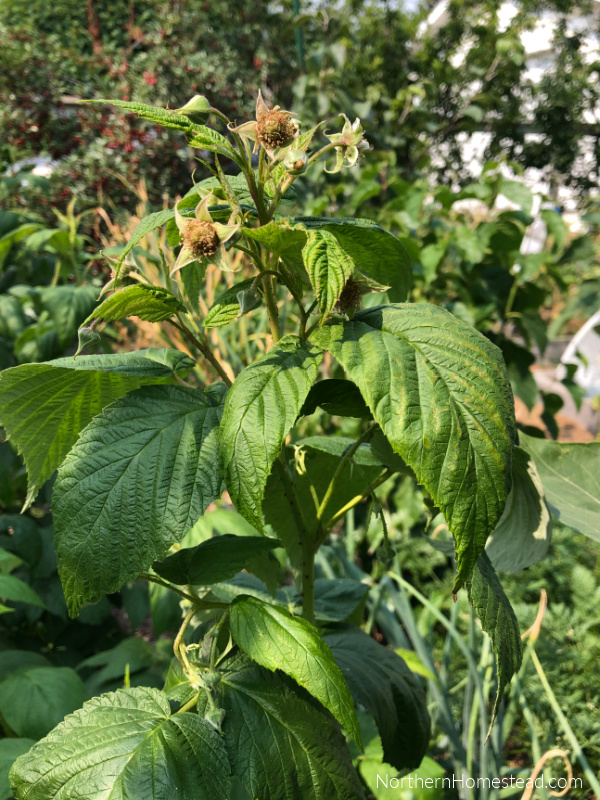
Pruning primocane raspberries
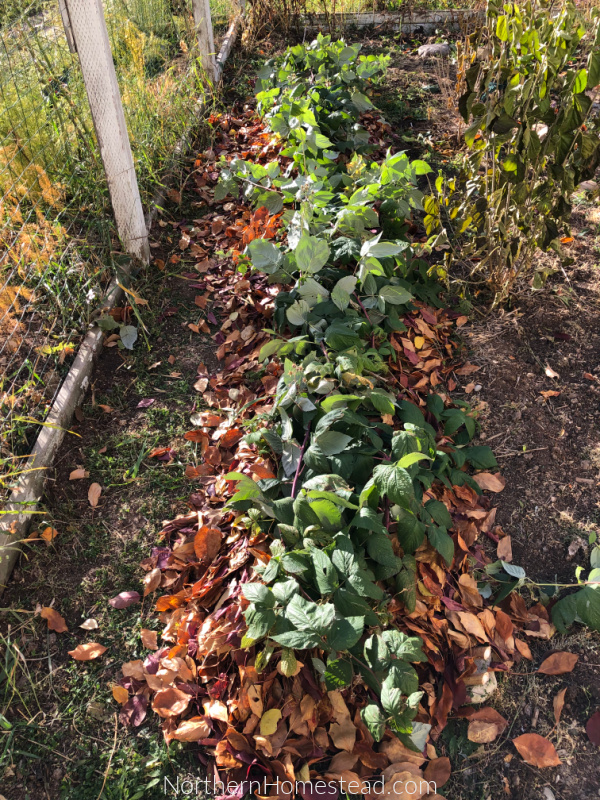
Primocane raspberries should be cut down to the ground in late fall, as they produce fruit on new growth. They are an excellent choice for areas prone to heavy winds or snow loads that can break the canes during winter. The Polka variety we grow also requires winter protection. To safeguard them, use the old canes and apply mulch to cover the row.
Pruning black raspberries
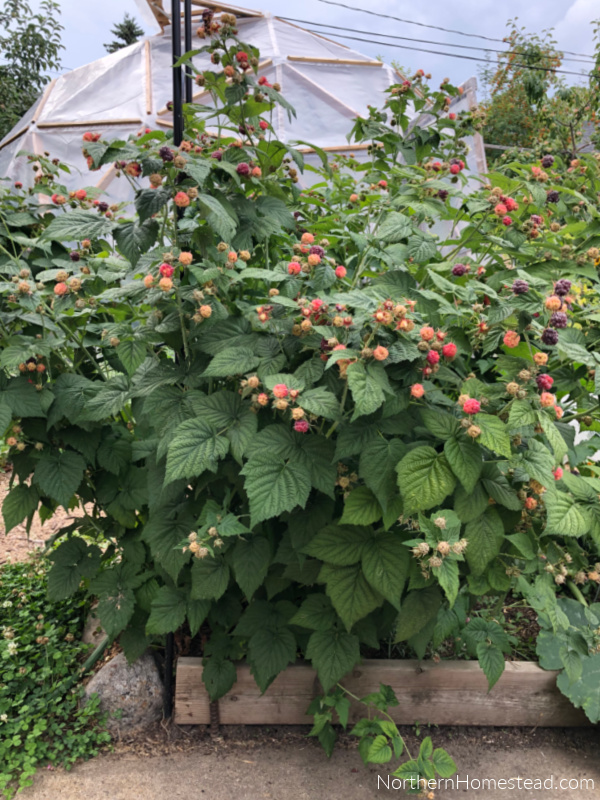
Black raspberries grow similarly to blackberries, although there are also available primocane black raspberry varieties. In this discussion, we will focus on the fast-growing regular cane black raspberries. The variety we cultivate is called Wyoming, which can reach up to 6 feet in height. The side shoots that produce fruit can grow about 3 feet long. These are massive plants!
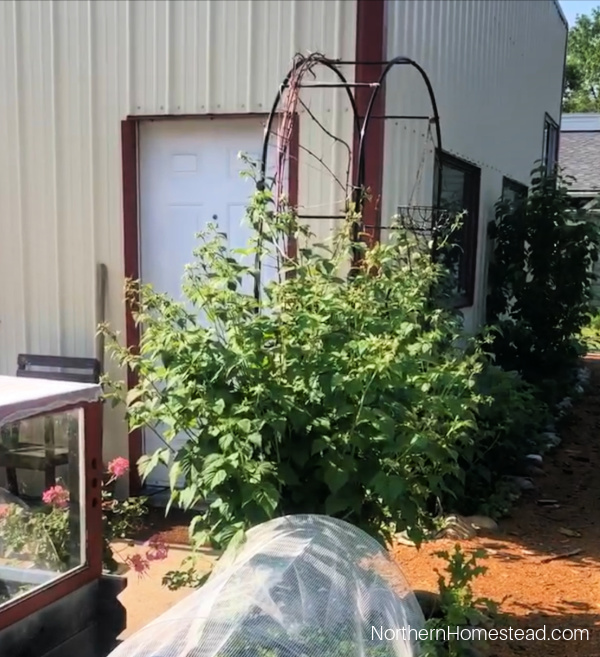
We have struggled to keep them at bay and overwinter them. As you can see in the picture above, the tops of the old canes did not survive the Zone 3 winter.
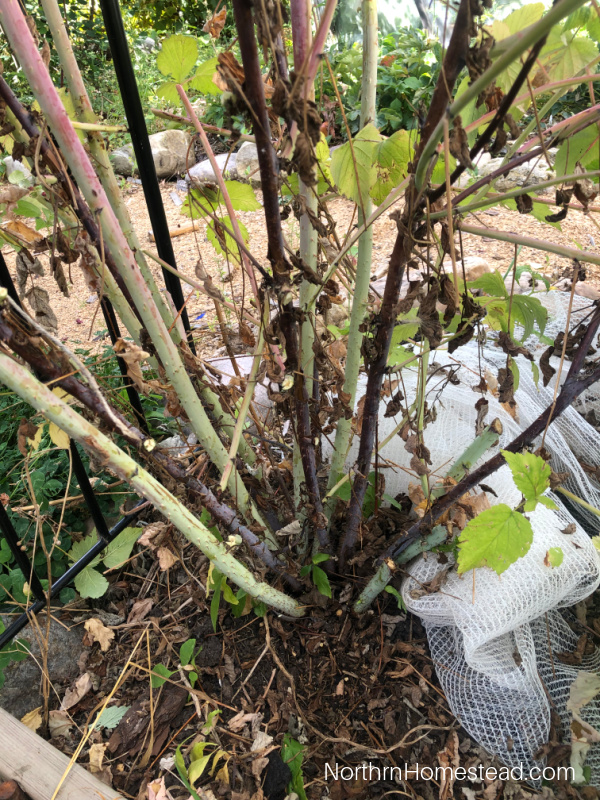
Our solution is to prune the plants back in the fall to about a foot in height. This helps them overwinter better and still allows for a significant harvest of berries. By mid-summer the following year, new canes begin to grow. These new canes grow quickly and do not produce berries, so we also prune them back to keep the bush manageable. In the fall, we remove the fruit-bearing branches that have side shoots and are dark in color, and we prune the new canes back to about a foot.
Care and support for raspberries
Raspberry canes do benefit from support. It also makes it easier to pick them.
We support our row with metal posts and horizontal wires.
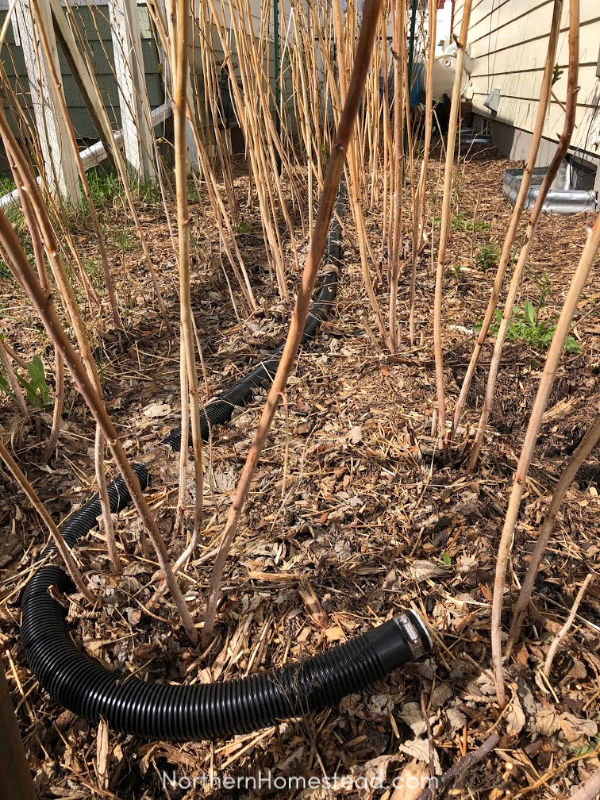
Raspberries like moisture, so we have a self-watering irrigation system in place. Whenever it rains, the water is distributed throughout the raspberry patch.
We use leaves and wood chips as mulch, which works very well. It keeps the weeds down and moisture in.
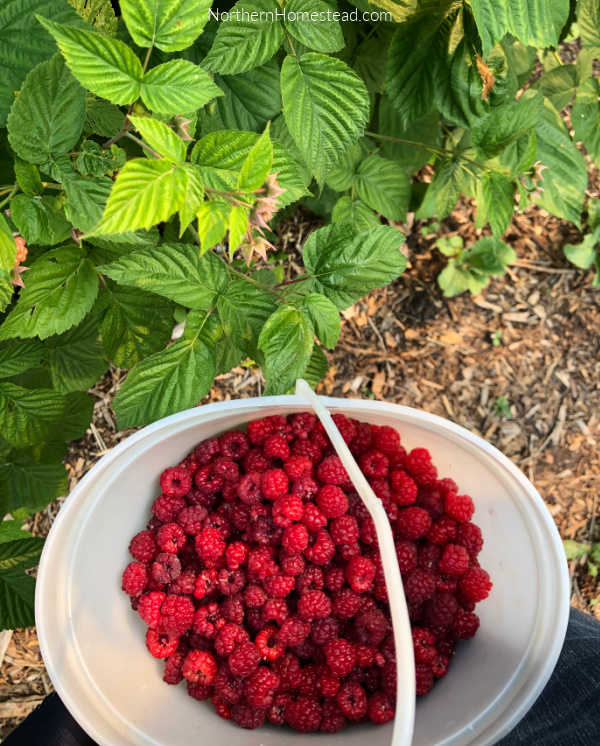
Regularly picking the berries can help prevent diseases. Plus, you get better quality berries. At peak times, we harvest daily. Raspberries freeze well if there are more than you can eat fresh.
Winter protection in a cold climate
Raspberries are usually hardy, but sometimes they do not make it through the winter. There are several ways to prevent winterkill.
Raspberries do not like to dry out. Watering them in for the winter and mulching can help ensure the soil does not dry out.
In areas with heavy snow and strong winds, the canes can be damaged over the winter months. Growing primocane raspberries might be a better option. Cut them back in the fall and cover them with a thick layer of mulch.
In areas with little snow cover or where the snow melts during warm spells, a mulch of leaves or straw can be beneficial.
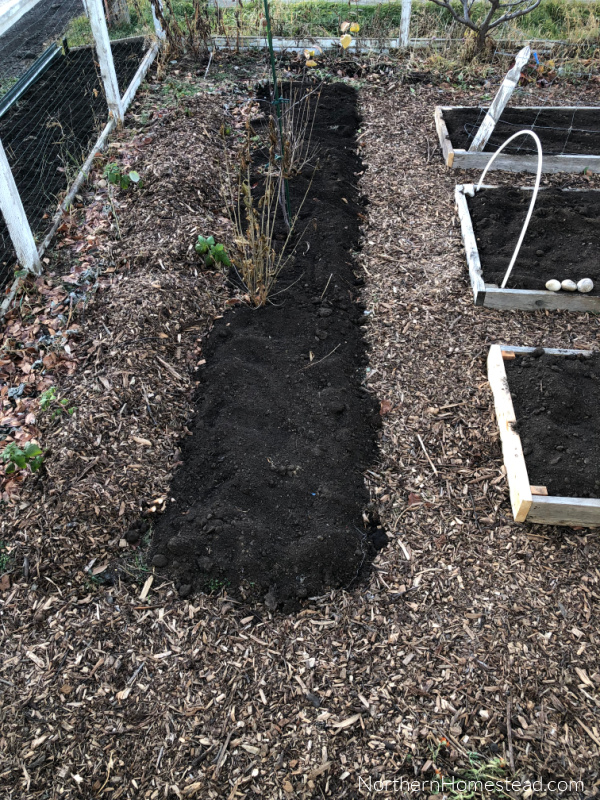
Primal cane raspberries require winter protection in Zone 3. In late fall, cut down the canes that bore fruit the previous summer and cover the plants with leaves, straw, or wood chips. In early spring, spread out the mulch to uncover the plants for new growth.
If your plants didn’t survive the winter, don’t give up on them too soon. Please give them a good watering in the spring; they might come back to life. It’s pretty challenging to kill raspberries.

Raspberries are so delicious. We try to grow enough to last us for a year so that we can enjoy them every morning for breakfast.
Grow yourself some raspberries!
We invite you to subscribe to Northern Homestead and follow us on Instagram, Facebook, or Pinterest for the latest updates.
More Trees and Shrub Articles You Might Enjoy:
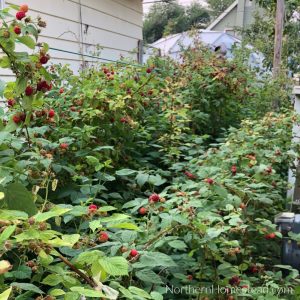
A Complete Guide to Growing Hardy Raspberries in Cold Climates

Growing Fruit and Berries in an Urban Yard

Preparing Fruit Trees for Winter in a Cold Climate

Preparing the Garden for Winter in a Cold Climate

Growing Aronia and Goji Berries in an Urban Garden
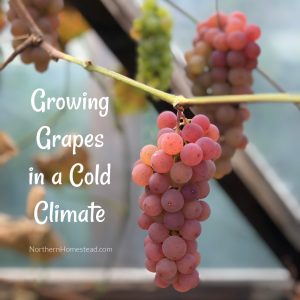
Growing Grapes in a Cold Climate

Planting a Shelterbelt

Growing Edible Pine Nut Trees
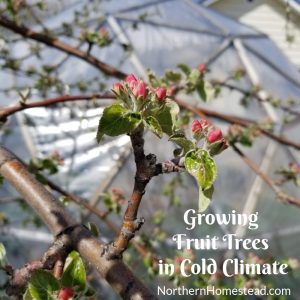
Growing Fruit trees in cold climate Part 2



We have a ton of wild raspberries on our property, but the berries are full of worms. Do you have any recommendations to save the wild patch? Also, should I bother planting ‘good stock’ or will the worm just infest them too?
There is probably an underlying problem for the apparent problem. Here is a suggestion that maybe will work, at least is worth trying. Cut all the canes back to about 1-2 feet, so the canes still have enough leaves to photosynthesize, but will not produce any berries this season. Examine the location, soil, and plants. Is the soil too wet, too dry, too weedy, etc? Is the location very windy or is it a heat trap? Now address the problem you can find. Maybe a new location is needed, maybe just some soil improvement. Adding organic matter to the soil and a thick layer of mulch might be all that is needed.
Also, examine if you got too many plants, and too densely planted, maybe the worms are just trying to help the plants to reduce overgrowth. See it in a holistic way, and you will understand the problem and see the solution.
And no, at this point I would not add new plants to the patch.
Thanks for the article! Great info. Question: what is heading the plant?
Cutting off the tops, or the growing point.